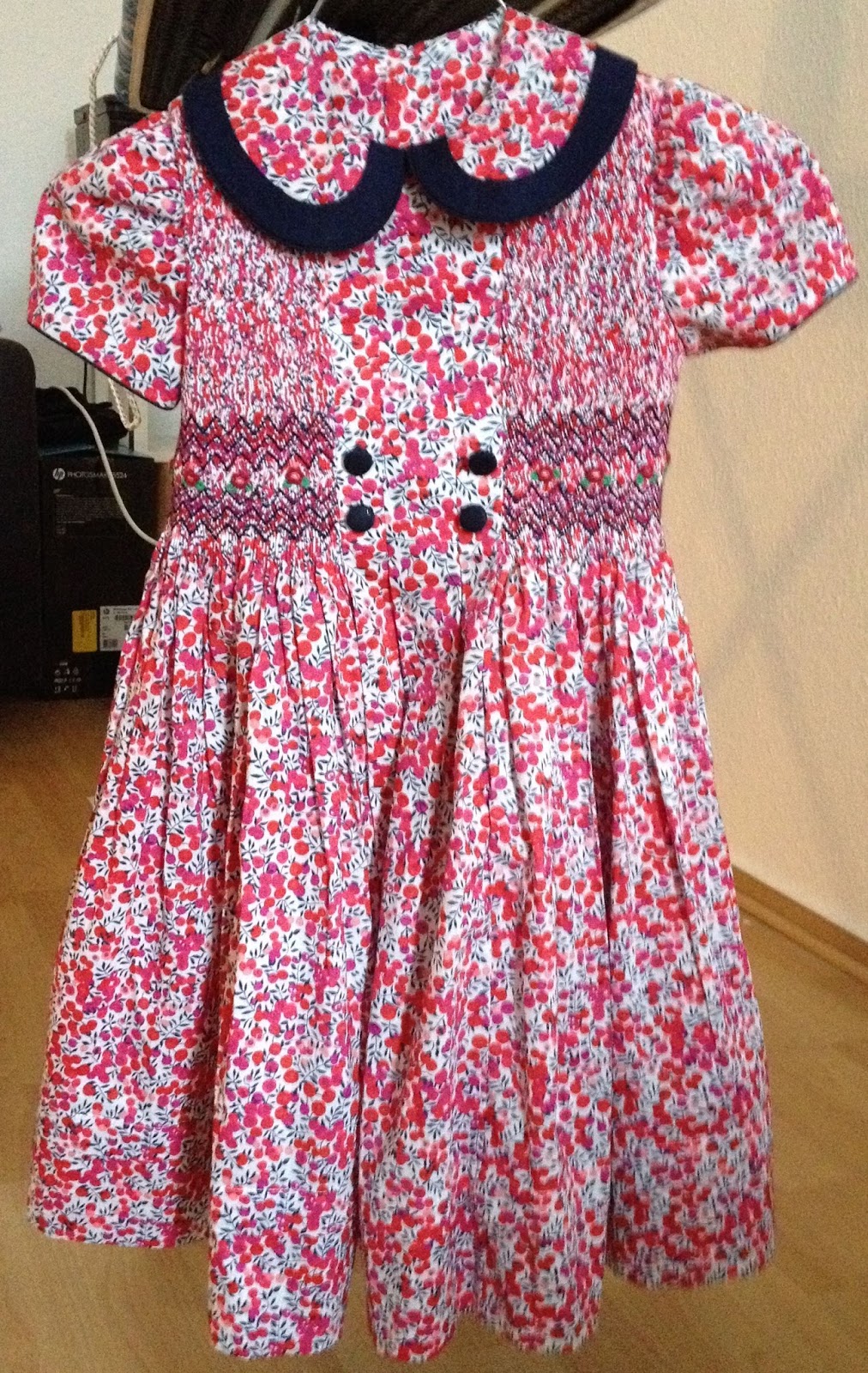As you know from the last post, I
recently had the privilege of taking a class in the United States from Gail
Doane. A week of good food, great friends and fun sewing. This year I will be finishing all three projects.
Project #2 is Gail Doane's Side Panel
Smocked Dress.
This project is not for the faint
hearted. The smocking in this project needs be to completed before the Double
Scallop Trim A-line Dress can be constructed meaning it was, at the time (and really still is), beyond my skill set. One of the other participants, Lisa, volunteered to smock
mine when the class was announced. At the time I was moving from France to Germany and everything was in upheaval.
I of course said YES...please! Oh I am so glad I did.
Here is completed project #2. The
front:
And the back:
Here is a close up of Lisa's wonderful smocking. I embroidered the little bullion roses.
My dress is in a different color
variation than the one one on Gail's blog. You can see hers at Lulu & Annie. As you page down past the dress you will see that there is a matching coat in wool that goes with it. It is in a partial stage of completion and is next on the list to be completed. This is a generous size 4 so hopefully it will fit Grace next year.
If you take this class, heads up that you not start the smocking the night before. It takes a good while to complete as there are rows and rows of back smocking you do not see. To sew this outfit you really need to have all the smocking done to make this dress in class.
YOU HAVE BEEN WARNED.
YOU HAVE BEEN WARNED.
Once in class and once I realized just how much work the smocking had been, truly I had no idea, a gift was in order. There is a variation of the Paisley Bird jacket and Matching Dress from Gail. (she has an Etsy shop you can buy the kit for the one on the blog) Not shown in that post is a variation Gail made, shown below made from vintage mother of pearl buttons from Gail's stash.
How cute is that????
Since coming back to Germany I have been wrist deep in other peoples old buttons searching for the right buttons to make this variation. The search has been fruitful. The hardest part was finding the heart shaped buttons. Gail's are Mother of Pearl. I can't find that, as a matter of a fact large heart shaped buttons of any sort in white are really hard to come by. I did find them in a plastic. I bought all 12 of them.
I think they are a pretty good match with the mother of pearl mixture. So here is my gift to Lisa. Hopefully she makes the jacket. I have a set for myself, just in case I want to make the jacket and two other sets that go out in the post soon to one of the other women from the class. Several others want buttons too so the search for large white shaped buttons continues as does the search for vintage mother of pearl buttons.






















